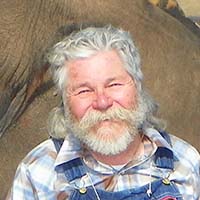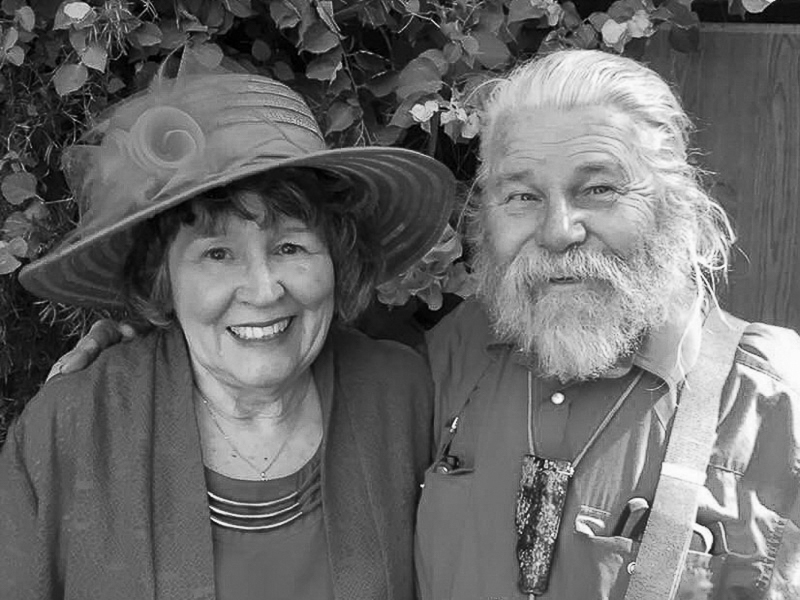
Four elements of the ancient world as seen through the eyes of ancient Slavs
Empedocles and Aristotle were two of ancient Greek philosophers who recognized all matter as being composed of FOUR ELEMENTS. The four elements which they identified were FIRE, WIND, WATER and EARTH. In modern terms we recognize them as SOLID, LIQUID, GAS and IONIZED GAS or PLASMA. One can argue that the concept of the four elements is more the intellectual property of the ancient Slavs than of the ancient Greeks. In Slavic languages the words for the FOUR ELEMENTS have a conspicuous and uncanny phonetic consistency. All of the Slavic languages have very similar words for the four elements with only very minor differences in pronunciation. For sake of parsimony Czech will be largely used here and other Slavic forms will be invoked only where they augment understanding.
Please note how the Czech word for “WIND” “VÍTR” resembles the English word “WATER”. Also, please note how the Czech word “VATRA” (CAMPFIRE) resembles the English word “WATER”. With a slight rearrangement of sounds and letters we see that TVRDA (HARD) also joins the WATER, VÍTR, VATRA family.
So we have TVRDA, VÍTR, VATRA and WATER. The “R” in the word for WATER had been lost in Slavic languages and the modern Slavic word for WATER is VODA. The reoccurring phonemic system of the four elements categorically contains the elements V or W, T or D and R. It is especially conspicuous in the Slavic languages. Constellations of words which are closely associated with the FOUR ELEMENTS of the ANCIENT WORLD continue the phonetic similarities in Slavic languages they maintain the phonetic association with the four elements to a higher degree than in other Indo-European languages, and this suggests that the ancient conceptualization of the four elements is best preserved in the Slavic mindset.
| SOLID | LIQUID | AIR / WIND | FIRE |
|---|---|---|---|
| KAMEN (STONE) | PRAMEN (SPRING) | PLIN (GAS) | PLAMEN (FLAME) |
| MAMEN (Breton SPRING) | |||
| PECka (STONE) | PECka (OVEN) | ||
| TVRDA (HARD) | VODA (WATER) | VÍTR (WIND) | VATRA (FIRE) |
| VÌDRO (PAIL for Water) | VEDRO (HOT & HUMID AIR) | VEDRO (VERY HOT WEATHER) | |
| VRCH (HILL) | VIR (WHIRLPOOL) | VIR (WHIRLWIND) | VAR (BOILING) |
| VOR (RAFT) | VØIDLO (HOT SPRING) | VICHR (GALE) | VØIDLO (HOT SPRING) |
| TOPOØIT (SOLIDIFY) | TOPIT (to DROWN) | FUÈET (toBLOW) | TOPIT (to KINDLE FIRE) |
| VIDRA (OTTER) & BOBR (BEAVER) (aquatic mammals) | VIDRA (OTTER) & BOBR (BEAVER) (aquatic mammals) | VAN (BREEZE) | |
| POJÍT (to SNACK) | PIT (to DRINK) naPAJET (to WATER ANIMALS) |
VÁT (to BLOW – as in aiding FIRE) | |
| TOPOØIT (to HARDEN) | PLAVIT (to FLOAT) PLAVAT (to SWIM) | PAØIT (to STEAM) VÁT (to BLOW) | PALIT (to BURN) |
| LED (ICE) | LÍT (to POUR) | German LUFT (AIR) | English LIGHT |
| NAPALIT (to STRIKE as with a Bat ) | NAPALIT l ZAPALIT (to STRIKE FIRE as with a Match) |
Consider
#1
The word VATRA has a wide lexical domain. In Croatian it simply means FIRE. In Czech it means (more specifically) a CAMPFIRE. In Albanian it is HEARTH.
#2
VITRious Glass combines SOLID Sand, Extreme FIRE aided by WIND, which forms LIQUID and SOLID material – and as such it resembles WATER.
#3
Perhaps the English word TEPID is related to the Czech TOPIT (to kindle fire and also to drown) and TEPLO (warmth)
#4
| PLOUT is the Czech word for FLOAT | VLAHA is the Czech word for MOISTURE |
| PLAMEN is the Czech word for FLAME | BLATO is the Czech word for OOZE (bog) |
| rozPLIT is the Czech word for DISSOLVE | PLIVAT is the Czech word for SPITting |
| PLIN is the Czech word for GAS | PLN is the Czech word for FULL |
| PLNIT is the Czech word for FILLing | PLINOUT is the Czech word for FLOW |
#5
In many languages the words for BREATH and SPIRIT are related.
| English | RESPIRE (Breathe) | SPIRIT (Ghost) | ||
| Czech | DYCHAT (Breathe) | DECH (Breath) | vzDUCH (Air) | DUCH (Spirit) |
Besides VZDUCH another Czech word for Air (especially UP IN THE AIRI) is POVÌTØI. Literally this means “AFTER AIR” and is consistent with POPEL (Ashes) as “AFTER BURN”. POTOPA (Deluge) means “AFTER INUNDATION”
#6
FLUSS in German means both SPIT and RIVER.
#7
The Basque word for STREAM is ERREKA. The Czech word for RIVER is RÌKA.
#8
BOR BOR is the Basque for BOIL and Czech is VØIT or VAØIT or VAR.
#9
GORI means GLOWING in BOTH Basque and Slavic languages.
#10
GORA means UPWARD in BOTH Basque and in Slavic languages (also MOUNTAIN in Slavic)
#11
The English word WET lost the final “R” as in WATER, just as the Slavic VODA(r).
#12
DYM is the Czech word for SMOKE and sounds like English STEAM.
#13
PARA is the Czech word for STEAM and PYRO as in PYROTECHNIC deals with FIRE.
In review we see that the lexicon of TETRASOMIA (Four Elements) has etymological, conceptual and phonological relationships in Indo-European languages and even in Basque. These relationships are best evident in Slavic languages.
P.S. (March 2008)
Ancient peoples of Europe recognized FOUR ELEMENTS: FIRE, AIR, WATER and EARTH. In Slavic languages (alone) these four “Tetrasoma” have similar phonemic structure: VATRA, VIETER, VODA(ending with an “R” in English) and tVRDA. The ancient peoples also spent centuries in trying to discover “Quintessence”: the fifth element, which, by magic, combined the four elements to create life or gold. JANTAR (AMBER) fills the requirements. In the first place, “jAnTAR” like the other four elements, contains phonemic features consistent with the other (4) Slavic words.
#2
#2. It has the color of HONEY (MEDICA) {English=MEAD}. Both honey and pulverized amber were common ingredients in MEDICAtions.
#3
Via the Jantarska Pot (The Amber Route) it served to unify the VENEDI of the Baltic Slope and the VENETI of the Adriatic Coast (both very ancient Slavic Peoples).
#4
In its transparent features it resembles air, liquid and fire, and the solids inside are often flying insects.
#5
In Germanic languages AMBER is sometimes called FIRESTONE, BERNSTEIN, or BURNSTEIN. The root word for AMBER is Ember (a glowing coal).
#6
When rubbed against hair or fur – amber acquires an electric charge which causes small, lightweight particles to gravitate to it as if by magic.
#7
In color JANTAR resembles not only honey, but also gold.
#8
Unlike most other stones, amber can be sacrificed as an offering in fire. Thus, it is reasonable to add jAnTAR, “the quintessence”, to the four (Slavic) elements identified in the earlier publication.
[Compiled 2001. Last modified 2008.]

Petr Jandacek
Author
(505) 672-9562
Petr Jandacek
Louise Jandacek
Mailing Address
127 La Senda Road
Los Alamos, New Mexico
USA
87544

